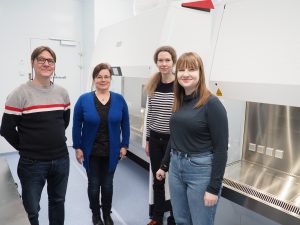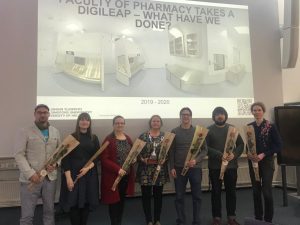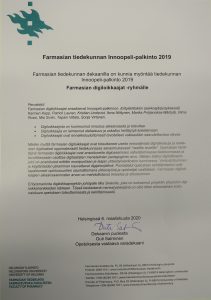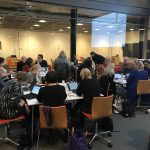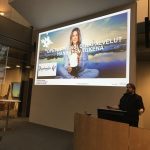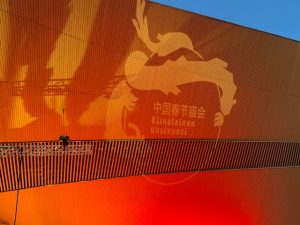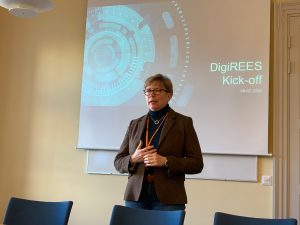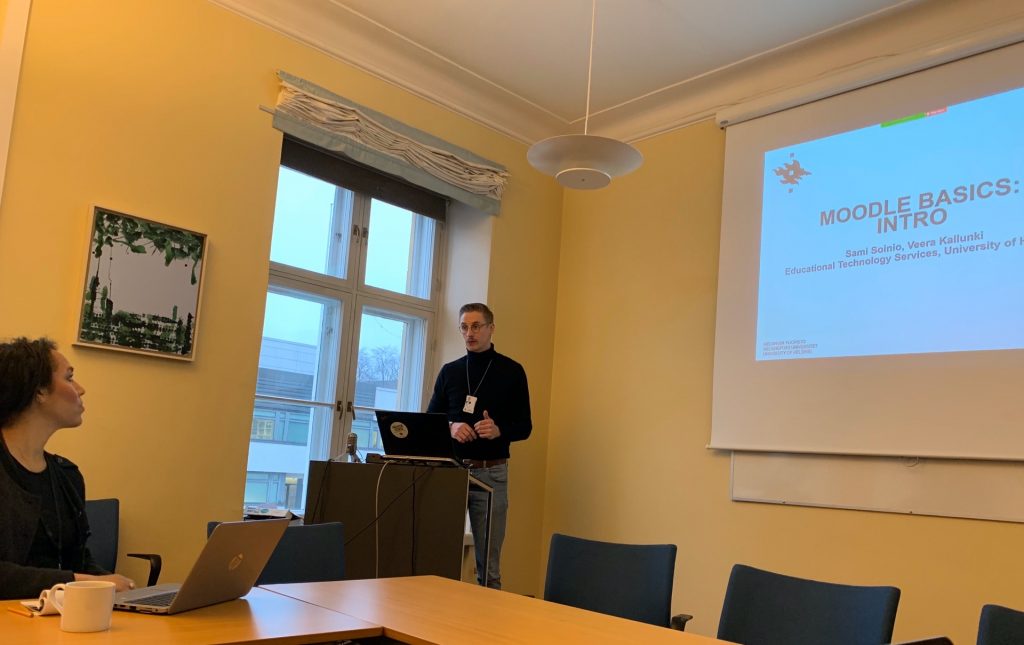Teksti: Outi Ihanainen-Rokio
Toteutimme viestinnän tieteenalalla työelämäprojektin, jossa opiskelijaryhmä ideoi ja toteutti digitaalisen Tuu viestintään! -kampanjan. Tavoitteena oli saada viestinnän opintotarjontaan aito digitaalisen viestinnän toteutuscase. Halusimme toteuttaa digitaalisia alumnivideoita ja vaikuttaa niiden kautta viestinnän tieteenalan opintoihin hakeutumiseen.
Tässä työelämäprojektissa emme simuloineet työelämää vaan oikeastaan teimme sitä. Projektiryhmä koottiin kandivaiheen opiskelijoista ja opetusformaattina toimi Työelämäopinnot -opintojakso. Aidon kampanjaryhmän tavoin opiskelijat kantoivat vastuun suunnittelusta, sosiaalisen median sisältöjen toteutuksesta sekä projektin organisoinnista ja johtamisesta. Itse toimin oppimisen ohjaajana sekä tarvittaessa asiantuntijana kanavien suhteen.
Opiskelijoiden tehtävinä olivat mm. videoiden ideointi, kuvausjärjestelyt, yhteydenpito haastateltaviin sekä videoiden editointisuunnitelmat. Videoiden kuvaamisen toteutti Drama Moving Pictures Helsinki Oy. Ammattilaiset hoitivat kuvaukset sekä jakoivat omaa asiantuntijuuttaan aktiivisesti osana projektin tekemistä, esimerkiksi kertomalla mitä leikkaussuunnittelun tavoitteena on ja miten ammattilaiset toteuttavat videohaastattelut. Opiskelijat saivat autenttisen osallistumisen kokemuksen siitä, miten videosisältö syntyy suunnitelmasta jakeluun asti.
Opiskelijat hahmottelivat kampanjan kohdeyleisöä tavoittavat ydinviestit, toteuttivat ne Instagramiin (joka oli kampanjan pääalusta) ja Facebookiin. Videoiden sijaintipaikaksi valittiin jatkojakelun helppouden vuoksi Youtube. Koko kampanjan tukialustaksi sekä raportointialustaksi valittiin WordPress. Nämä kaupalliset alustat valittiin ennen kaikkea niiden yleisyyden ja helpon saatavuuden vuoksi. Aikataulumme toteutukselle oli tiukka, sillä kampanjan ajoitus tähtäsi yhteishaun alkuun. Globaalien alustojen käyttäminen on viestintäammattilaisille arkipäivää – projektissa opiskelijat oppivat, mitä tarkoittaa näiden alustojen käyttö vaikuttamistyössä ja miten tällainen kampanja kootaan.
Orgaanisen sisällön lisäksi opiskelijat suunnittelivat ja toteuttivat maksetun näkyvyyden suunnittelun ja sisällön. Käytännössä tämä tarkoitti mainontaa pääosin Instagramissa ja hiukan Facebookissa. Tässäkin tavoitteena oli ammatillisen osaamisen karttuminen digitaalisen mainonnan kokeilulla. Mahdollisuutemme tavoittaa kohdeyleisö täysin uudella some-tilillä ja olemattomalla aiemmalla näkyvyydellä oli minimaalinen, ellemme olisi panostaneet maksettuun näkyvyyteen.
Kampanjan perusnäkyvyys on nyt toteutettu, samoin maksettu näkyvyys. Käyttäjätili @tuuviestintaan löytyy Instagramista ja Facebookista ja blogisivusto (https://tuuviestintaan.wordpress.com/blog-feed/) kerää yhteen kampanjan videosisällön sekä toteuttajien kokemukset. Orgaanisia postauksia tullaan tekemään vielä 1.4. saakka.
Nyt 12.3. mennessä @tuuviestintaan -tili on saanut 95 Instagram-seuraajaa, ja meillä on ollut vajaa 400 kävijää WordPress-sivustolla. Nämä luvut kuulostavat pieneltä, mutta kun katsomme mitä alle 200 € budjetilla toteutetulla maksetulla näkyvyydellä saatiin Instagramissa aikaan
- Tavoitetut henkilöt eri mainoksilla yhteensä: 52999
- Näyttökerrat eri mainoksilla yhteensä: 94496
Voidaan todeta, että näkyvyyttä kohderyhmässä on saatu.
Mitä tämä hanke opetti digitaalisesta viestinnästä? Opiskelijat kokivat, että he ovat saaneet aidon työelämäkokemuksen digitaalisen kampanjan kokonaistoteutuksesta. Opittiin, miten monipuolista osaamista viestinnän toteuttaminen digitaalisessa ympäristössä vaatii ja kuinka paljon tarvitaan erilaisten välineiden hallintaa ja ymmärrystä niistä. Viestintäala on todella kytkeytynyt teknologian kehitykseen ja tarvitsemme tämän kaltaisia oppimismahdollisuuksia, jotka avaavat opiskelijoille viestinnän ammattialan käytäntöjä.
Opiskelijat olivat ryhmänä ihailtavan itseohjautuvia: organisoivat ja tekivät ahkerasti jakamansa työt. Tekemistä oli paljon, ja suuri osa siitä oli tavalla tai toisella uutta kaikille. Ennakkoluulottomasti ryhmä otti eri välineitä haltuun ja kaikkiin teknologisiin haasteisiin löydettiin yhdessä ratkaisu. Ammatillista oppia opiskelijoille tuli ennen kaikkea digitaalisen vaikuttavuuden rakentamisesta tilanteessa, jossa oikeastaan mitään ei ole etukäteen olemassa. Opettamisen näkökulmasta voisin summata, että meillä on nyt paremmat valmiudet ja kokemusta toteuttaa työelämälähtöisiä viestinnän projekteja digitaaliseen ympäristöön.
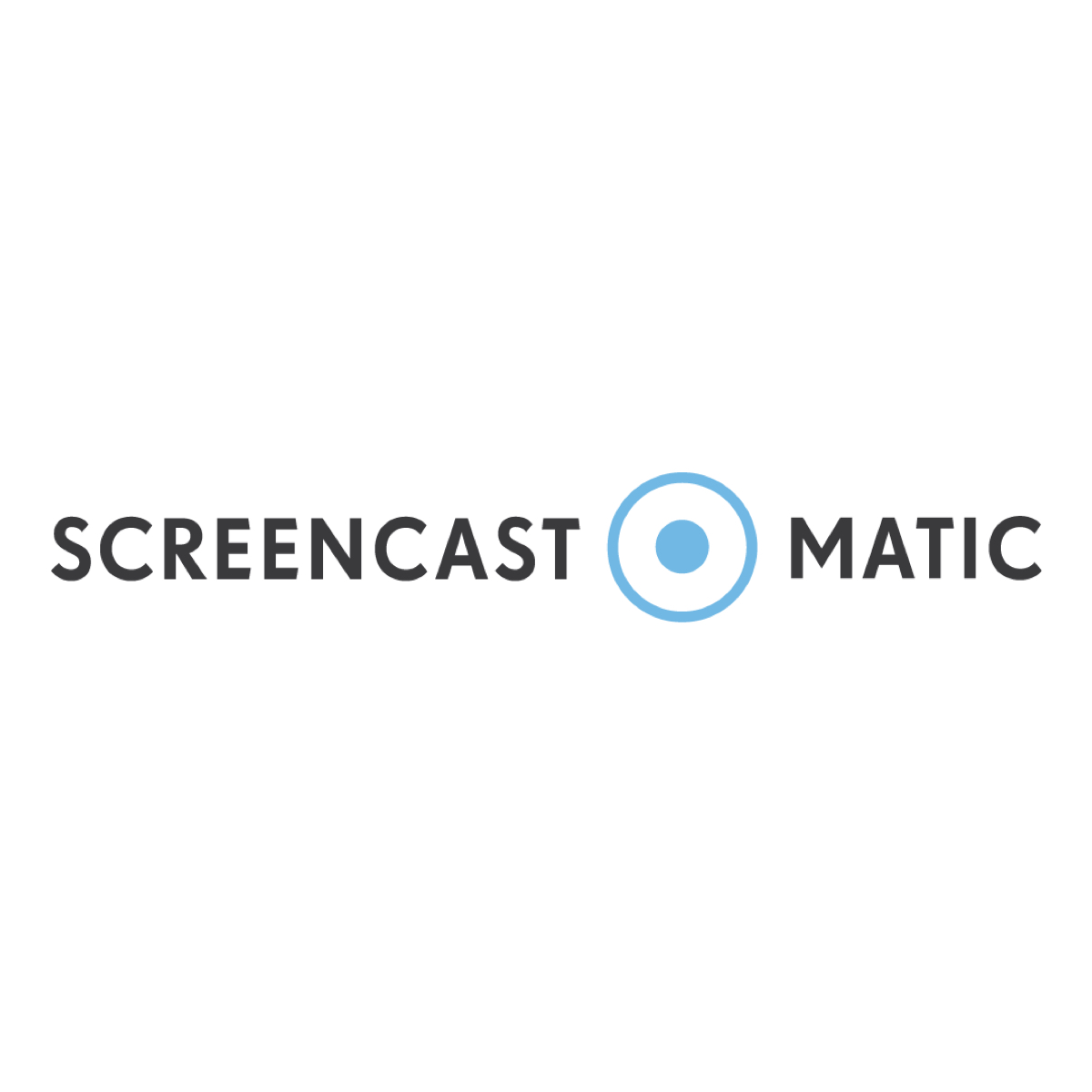 Initially, the video training was meant to be organised offline, on-premises, and we are very glad that our instructors Esko Kuittinen and Mikael Kivelä from the video team were so flexible and could organise both sessions via Zoom at short notice. At the first session on the 16th of March, they taught us how to use Screencast-O-Matic and make scripted videos. Screencast-O-Matic proved to be a useful tool for recording lectures for online teaching, which many teachers found themselves in need of doing these days. During the session 2, we learned how to edit videos and upload them at Unitube. The second training revealed, that editing is not that complicated, and with a few tweaks the quality of the video can improve significantly.
Initially, the video training was meant to be organised offline, on-premises, and we are very glad that our instructors Esko Kuittinen and Mikael Kivelä from the video team were so flexible and could organise both sessions via Zoom at short notice. At the first session on the 16th of March, they taught us how to use Screencast-O-Matic and make scripted videos. Screencast-O-Matic proved to be a useful tool for recording lectures for online teaching, which many teachers found themselves in need of doing these days. During the session 2, we learned how to edit videos and upload them at Unitube. The second training revealed, that editing is not that complicated, and with a few tweaks the quality of the video can improve significantly.